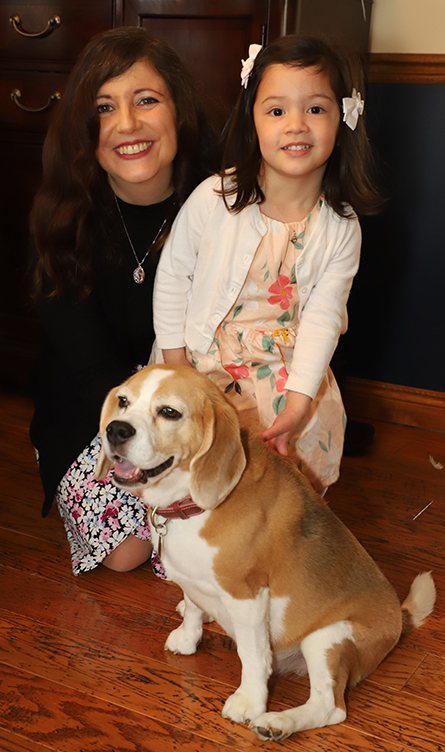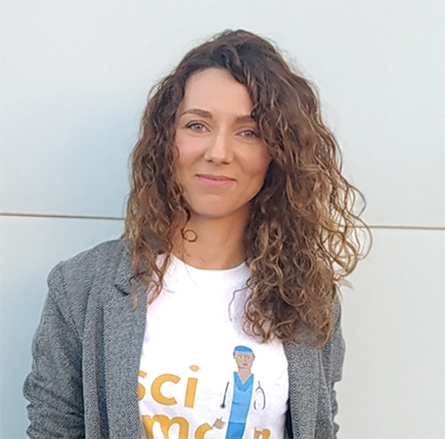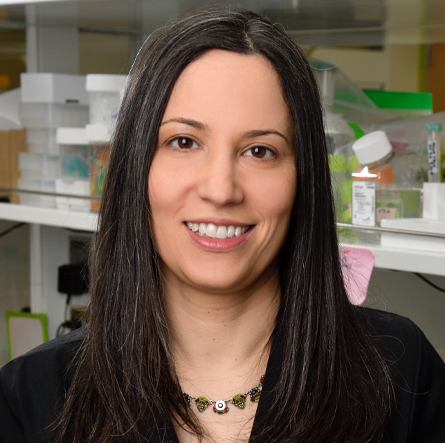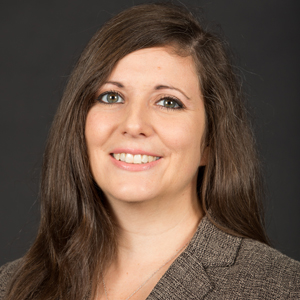
Balancing act: You’re not alone on your tightrope
As yet another late night ticked by, the clock showing 3 a.m. pass to 4 a.m., I found myself getting restless. I needed to grade more lab reports, review the next day’s slides for my virtual biochemistry classroom and, maybe, put some of my toddler’s toys away so we could walk in the house without damaging a foot.

pose for a Mother’s Day portrait.
Somewhere between tired and too wired for sleep, I found myself scrolling through Instagram for the tenth time that night. I don’t remember exactly when in the endless pandemic nights I found them, but there they were, just when I needed them — groups of people who identify as mothers who also work in science. It was a community of people in situations like mine, and an array of other situations, with stories to tell and a virtual common ground. These informative, funny, strong people provided me inspiration when I least expected it. I want to tell you about them, but first let me tell you a little about myself.
I came to motherhood later than some; I gave birth to my daughter three days before I turned 39. I had passed through tenure and promotion to associate professor at the College of New Jersey, a primarily undergraduate institution, and felt comfortable in my almost nine-year career. I’d been career focused for much of my adult life; my husband and even my dog were used seeing me give my largest efforts to my profession.
I wanted to be a parent, however, and while I’d often heard that there’s no perfect time to have a baby, we planned as best we could when to start our family. I couldn’t imagine the late nights of grad school, the arduous steps of my postdoctoral work and the effort to find a solid footing in my early academic career while also being a parent. I know others manage, and I am humbled by their stories. And when I didn’t want to wait any longer to become a mother, I leapt in with both feet.
I did not expect the drastic paradigm shift in balancing work and life. I was set in my ways until my wonderful and awe-inspiring daughter rocked my world.
My first semester back after maternity leave, I was frequently in tears; I contemplated leaving my job. I was under enormous pressure to continue on my path, with added leadership roles, new teaching techniques and more research students to train along with my new responsibilities (and adventures) as a parent. I cared deeply about my work, but I cared even more for my child, and there is only so much time in a day.
The following semester, spring 2020, I made a plan for more balance and preparation. A month and a half in, the COVID-19 pandemic shut down the world. With a newly minted 1-year-old in tow, I had to redesign my entire professional life to fit our new virtual world.
This tale is not mine alone. Even before the pandemic, many parents with careers in science shared stories of striving for work–life balance and a meaningful life that is bolstered, not thwarted, by a meaningful career. We are a community.
Since my late-night scrolling discovery, I have eagerly followed two groups on social media. Both are led by women who are mothers. They collect stories, data and information with similar goals: policy change to benefit families who work in science, and scientific literacy to help families make informed, science-backed decisions.
Mothers in Science
Mothers in Science is an international nonprofit that advocates for mothers working in science, technology, engineering, mathematics and medicine. It promotes workplace equity and inclusion for parents and caregivers and developing policies that can help retain women with children in STEMM fields. This involves identifying barriers preventing women with children from progressing in these careers.
CEO and co-founder Isabel Torres talked to me about the need to create a community. Many women feel isolated when they become parents, she said, and she felt a need to “connect the mothers.” She also set out to research the barriers and myths surrounding women and their lack of representation in leadership positions in STEMM.
Mothers in Science conducted an international survey in partnership with the International Network of Women Engineers and Scientists, Parent in Science, Femmes & Sciences, 500 Women Scientists and Washington University in St. Louis. The results showed that structural and societal barriers, such as widespread maternity bias and discrimination, are completely normalized across many countries. The survey, “Impact of parenthood on career progression in STEMM,” was issued between Sept. 15 and Dec. 31, 2020, and collected information about respondents' situations prior to the COVID-19 pandemic; compiled responses from 8,930 mothers, fathers and nonparents across 128 countries.

women who feel isolated and to raise awareness and research the barriers and
myths surrounding women’s lack of representation in leadership positions.
Among the results: About 34% of the mothers surveyed left full-time STEMM employment after they had children. Among academics, the publication rate of women declined after they had children, and the publication gap between male and female parents persisted and increased over time. In terms of maternity bias and discrimination, 34% of mothers said their competence was questioned by their employers and/or colleagues after they had children, compared to 10% of fathers, and 38% of mothers said that they were offered fewer professional opportunities, compared to 13% of fathers. A whopping 61% of mothers said that parenthood negatively impacted their careers.
Much discrimination is so normalized that many women are not aware of it until many years later, Torres said. She noted that about 28% of mothers chose to prolong maternity leave or to leave their full-time positions while breastfeeding, suggesting that breastfeeding stigma and lack of workplace support, such as inadequate lactation facilities, affect women's choices to return to work.
In general, taking parental leave still carries a stigma, especially in countries such as the U.S. where there is no common policy on leave, Torres said. The stigma also persists for fathers, because many workplaces offer little, if any, paternity leave, and many people have negative assumptions about fathers who partake.
By disseminating their survey data and working with statisticians, Torres and colleagues hope to start a conversation to raise awareness. With support of women from dozens of countries, they are promoting systemic change by proposing evidence-based ideas for new policies and contacting leaders in institutions, agencies and governments to implement these policies.
“The mother becoming the default parent is so normalized we don’t see it,” Torres said. “With three times more child care responsibilities and work, overtime, weekends … it adds up.”
Mothers in Science and their collaborators are focused on changing certain policies; equal parental leave is a top priority. Other proposals, such as policies to eliminate maternity bias, grant extensions for recipients who become parents during the grant period, or preventing after-hours meetings that could exclude parents, are more nuanced. A round-the-clock work culture is hard to change. The pandemic has shown that remote work is possible and workers can be productive within a self-created schedule. Increased flexibility could benefit all working parents, especially those in science whose work may not fit into prescribed times.
Torres paints a hopeful picture for a future that denormalizes obsolete traditional family roles and embraces a model where career and a family are not mutually exclusive. “We are all in the same boat,” she said. “We all have a career and enjoy our kids, and the institutions have to adapt. It starts with the leaders, the heads of departments, to educate people and enforce the (anti-discrimination) laws that exist.”
SciMoms
From the first moments I held my daughter, I knew I needed to make informed decisions to help her thrive — beginning with how to feed her. Both she and I struggled with breastfeeding, and I switched to formula feeding when it became too difficult. I felt like a failure; everything I read on the internet made me question and fret over my decision.
Then I found SciMoms, an educational nonprofit founded by mothers who work in science that promotes evidence-based parenting and policy. I read their article “Is breastfeeding really best and is formula harmful?” and found relevant and useful references, with the science boiled down in a way I could understand easily. Quoting the American Academy of Pediatrics, the writers assured me that “both approaches (to feeding your baby) are safe and healthy.”

State University, is a founding member of SciMoms.
The SciMoms use comics, songs, infographics, blog posts and social media to bring scientific literacy to the masses, especially parents. I find solace in science, but scientists are not the only ones who can use scientific tools to make decisions. Everyone can benefit from having evidence-based, factual information, especially when making parenting decisions.
Alison Bernstein, an assistant professor of translational neuroscience at Michigan State University and a founding member of SciMoms, walked me through their origin story: Five scientists and science journalists penned an open letter in response to celebrity campaigns against genetically modified organisms. With the hashtag Moms4GMOs, they started a petition requesting that advocacy, especially by celebrities or other high-profile influencers, be based on facts, not fear. This petition gained the interest of filmmakers who produced the documentary “Science Moms.” And from this, SciMoms was formed.
The group’s goal is to make “reliable resources easy to find,” Bernstein said. Information exists on the science of everything from nutrition and vaccination to the safety of activities such as skateboarding, trampolines and contact sports. Using their scientific and journalistic training, she said, the SciMoms “sift through massive amounts of information quickly, see what is valid from experts in the field and what can be thrown away, and distill it down for people.”
They also link to experts, functioning as science-to-layperson translators. “Not everyone has the same education,” Bernstein said, or the time to research “every last detail,” but parents have very real questions and they want facts. This need became more urgent with the COVID-19 pandemic as seemingly conflicting information, often based on scant research, single studies, and political agendas, flooded the media, offering little authoritative guidance for navigating a mutating virus.
The SciMoms target audience, Bernstein said, is “the mom you meet at the playground who maybe has not had science since high school or does not care for the details of evidence-based science you would not need to know (in everyday life).”
This parent has questions and wants to know what experts say but also wants simple answers and resources. These can be as straightforward as the safety of the vaccine schedule for young children or as nuanced as nutrition concerns: organic, GMOs, pesticides? SciMoms will provide information and, at times, a personal story or thoughts, but they will not endorse or recommend one point of view. They are a volunteer organization with no underlying agenda, sponsorship or monetary gain, Bernstein said. Their common goal is scientific literacy, and they persist because parents seek information and may not have the time or resources to make sense of it on their own.
“The goal of our science communication is to translate the science,” Bernstein said, so people can “make science-based decisions for health and wellness.”
The March 2021 issue of Time magazine featured profiles of “Moms on a Mission,” including SciMoms. A few months later, COVID-19 vaccines were approved for ages 12 to 15 but not for younger children. In families with mixed vaccine status, and parents were unsure what activities and environments were safe. Bernstein and other science communicators developed an infographic that ranked low-, medium- and high-risk activities.
When groups like SciMoms collaborate with other science literacy–based organizations, they often are accused of preaching to the choir, Bernstein said. But collaboration among evidence-based parenting groups reaches a wider network through the domino effect of conversations and increases the spread of information to parents who don’t work in science. While much of their evidence is anecdotal, from messages she and other SciMoms have received, an increase in sign-ups for their blog and newsletter demonstrates a growing influence.
“It’s about finding like-minded people who are using the same types of scientific tools to make decisions,” she said, and then building trust among a larger community.
Since the height of the pandemic, I’ve been referencing the articles and links culled by SciMoms, trusting their sources on mask policies, Centers for Disease Control and Prevention guidelines, vaccine information and more. In parallel, I often scroll through Mothers in Science for stories of parents who have surmounted great challenges and who work for policy changes. These two sides of the same coin provide me, a mother and scientist who is looking to parent effectively and balance my professional and personal life, with an online community that helps, nurtures, supports and adds confidence to my decision-making.
So while I may be finishing the last words of this essay at 2:24 a.m. as I put off my daughter’s lunch prep for tomorrow and consider plotting data I obtained in the lab today, it brings me joy to know that this may reach a few more scientific parents trying to walk their own tightrope between work, family, decisions and policies. Thank you for being a part of my community and for advocating for parents in science.
Bringing science into our children’s lives through our careers, our choices and our networks will influence a new generation to stand up for facts and to consider evidence when achieving their own balance.
Enjoy reading ASBMB Today?
Become a member to receive the print edition four times a year and the digital edition monthly.
Learn moreFeatured jobs
from the ASBMB career center
Get the latest from ASBMB Today
Enter your email address, and we’ll send you a weekly email with recent articles, interviews and more.
Latest in Careers
Careers highlights or most popular articles

Upcoming opportunities
Calling all biochemistry and molecular biology educators! Share your teaching experiences and insights in ASBMB Today’s essay series. Submit your essay or pitch by Jan. 15, 2026.

Mapping proteins, one side chain at a time
Roland Dunbrack Jr. will receive the ASBMB DeLano Award for Computational Biosciences at the ASBMB Annual Meeting, March 7–10, just outside of Washington, D.C.

Exploring the link between lipids and longevity
Meng Wang will present her work on metabolism and aging at the ASBMB Annual Meeting, March 7-10, just outside of Washington, D.C.

Upcoming opportunities
Calling all biochemistry and molecular biology educators! Share your teaching experiences and insights in ASBMB Today’s essay series. Submit your essay or pitch by Jan. 15, 2026.

Defining a ‘crucial gatekeeper’ of lipid metabolism
George Carman receives the Herbert Tabor Research Award at the ASBMB Annual Meeting, March 7–10, just outside of Washington, D.C.

Building the blueprint to block HIV
Wesley Sundquist will present his work on the HIV capsid and revolutionary drug, Lenacapavir, at the ASBMB Annual Meeting, March 7–10, in Maryland.

